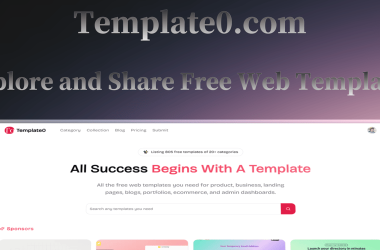Quick Summary: Personalization is no longer optional in e-commerce; it’s essential. Online retailers can increase sales and customer loyalty by implementing Magento personalization extensions to provide distinctive shopping experiences. From initial setup to sophisticated optimization techniques, this guide helps you configure these potent tools to optimize your return on investment.
Imagine entering a store where the salesman recognizes your name, recalls your previous purchase, and displays items that you genuinely want. Online buying benefits from personalization in this way. Magento customization extensions are unique resources that assist your online business in providing each visitor with these personalized experiences.
These add-ons function as intelligent helpers for your website. They keep track of what clients view, recall what they purchase, and recommend items that they might find appealing. Recent data indicates that companies that use personalization find notable revenue increases.
Eighty percent of consumers are more likely to buy from companies that provide individualized experiences, according to recent research. Even more astounding is the fact that up to 31% of e-commerce revenue can be generated by individualized product recommendations. These figures demonstrate the value of making the appropriate tool investments.
Why Personalization Matters for Your Bottom Line
Let us discuss money. When you use Magento personalization extensions appropriately, you’re not just making your store seem better; you’re also increasing your earnings.
According to studies from 2024, tailored shopping experiences can enhance customer lifetime value by up to 30%. When customers feel understood, they spend more, return more frequently, and tell their friends about your business.
Here’s what occurs when personalization is effective:
Your conversion rates increase because people see products they want. Shopping cart abandonment has decreased since the experience feels meaningful. Customer satisfaction rises.
because shopping becomes more convenient and pleasant. Return rates drop when individuals receive exactly what they expected.
Companies that thrive at personalizing earn 40% more revenue from these activities than the typical player. That’s not a little difference; it’s transformative for businesses of all sizes.
Pre-Configuration Essentials
Prepare before digging into the configuration. Consider this like getting ready for a road trip: you wouldn’t start driving without first checking your petrol tank and arranging your itinerary.
First, analyze your present client data. What data do you already collect? This could include purchase history, internet habits, location, and device settings. The more data you have, the better your personalization will work.
Next, establish clear goals. Do you wish to improve the average order value? Reduce cart abandonment? Increase customer retention? Your aims will determine how you configure your extensions.
Ensure that your Magento store is working smoothly. Update to the most recent stable version and confirm that your hosting can handle the additional processing required for customisation. According to industry benchmarks, personalization features can increase server load by 15-20%, making sufficient hosting critical.
Finally, review your product catalog. Personalization works best for products with detailed features, high-quality photos, and precise descriptions. Clean, well-organized data makes everything else easier.
Step-by-Step Configuration Guide
Now, let’s get practical. Configuring Magento customizing extensions does not have to be difficult if you take a methodical approach.
Installation and Initial Setup
Begin by backing up your Magento store fully. This is not negotiable. Install your preferred extension according to the developer’s instructions. Most extensions may be installed via Magento’s composer or by uploading files to the relevant directories.
After installation, run the Magento setup upgrade command to erase all caches. Navigate to your admin panel and find the extension’s configuration area, which is normally located under Stores > Configuration.
Basic Configuration Settings
Enable the extension and, if necessary, set up your license key. Set your basic options, such as which product categories should have personalization capabilities, the file formats that consumers can contribute, and custom image size limits.
Research suggests that permitting alternative file formats raises completion rates by 12%. Support popular formats such as JPG, PNG, PDF, and SVG to meet the diverse needs of our customers.
Configure the design canvas settings. Set relevant measurements for your products. A t-shirt design space is distinct from a business card or photo canvas. Check that the dimensions match your production requirements.
Advanced Personalization Features
Create design templates that inspire customers. Pre-made templates boost utilization rates by 40% by lowering the barrier to entry. Customers who are scared by blank canvases frequently abandon the customizing process.
Configure text choices such as fonts, colors, and effects. Offer 10-15 font options, providing enough variation without overwhelming people. Include common typefaces such as Arial, Times New Roman, and fashionable script fonts.
Create clipart and image libraries if your extension allows it. Organize these into distinct categories, such as holidays, sports, animals, and symbols. A good organization enables clients to find what they need fast.
Pricing Configuration
Determine how customisation impacts pricing. Will you charge per design element, per color, or a set customizing fee? Industry research indicates that open, upfront pricing reduces cart abandonment by 18%.
Set up dynamic pricing rules if your extension supports them. For example, adding text may be free, yet submitting bespoke photos may incur additional fees. Make these guidelines apparent throughout the design process.
Integration with Your Workflow
Connect the personalization extension to the order management system. Customized orders require specific treatment, so ensure that design files are correctly sent to production.
Set up email notifications with design previews. Customers may immediately verify their orders, which reduces customer support questions by 25%.
Set up proof approval protocols if you offer them. Some organizations allow consumers to approve final proofs before manufacturing, which reduces errors and returns.
Top 5 Magento Personalization Extensions
Selecting the right extension is key to success. Here are five powerful alternatives that provide outstanding customizing features.
1. Magento Product Designer Extension by SetuBridge
This plugin turns your store into a personalization powerhouse. Customers can personalize products with text, photos, and design components directly from your website. The visual editor allows shoppers to see exactly what they are making.
SetuBridge Product Designer provides real-time previews, many design levels, and support for a variety of product categories. It’s especially useful for firms that sell personalised t-shirts, mugs, phone covers, and promotional goods.
2. Custom Product Designer for Magento 2 by Aitoc
Aitoc’s solution is designed to be flexible and user-friendly. Customers can submit their own designs, add text in a variety of fonts, and apply special effects. The interface is simple, allowing even first-time users to produce professional-looking, unique items.
This addon contains design templates, clipart libraries, and advanced text editing. It’s perfect for businesses that want to provide creative freedom without overwhelming clients.
3. Magento 2 Product Designer by Meetanshi
Meetanshi’s product designer focuses on mobile responsiveness and quickness. In 2024, mobile commerce will account for 73% of total e-commerce sales, making mobile optimization important.
This extension has touch-friendly controls, fast loading times, and integrates seamlessly with Magento’s core features. Customers may design goods on mobile phones with the same ease as on desktop computers.
4. Magento 2 Personalized Products by Milople
Milople takes a holistic approach to customisation. Aside from graphic design tools, this extension contains functionality for unique pricing, custom option management, and thorough order processing for customized items.
The addon allows for sophisticated product combinations and intricate customisation rules. It’s ideal for enterprises with advanced customisation requirements.
5. Magento 2 Product Designer Extension by Magecomp
Magecomp’s extension strikes a mix between features and price. It provides basic customization features without adding additional complexity. The minimalist interface allows clients to concentrate on crafting their ideal product.
This solution supports design saving, allowing clients to work on their designs in numerous sessions. It is a wonderful alternative for stores that are just starting with customisation.
Maximizing ROI Through Strategic Implementation
Return on investment comes from smart implementation, not just installation.
Focus on High-Value Products
Not all products require customizing choices. Concentrate on things with high margins and considerable personalization appeal. According to research, enabling customisation on 20-30% of your inventory can increase total sales by 40-50%.
Apparel, gifts, home décor, and promotional products are all popular categories for personalizing. Customers demand customizable options in these sectors.
Calculate the profitability of personalised products. Add in additional production time and complexity. Ensure that your pricing includes these expenditures while remaining competitive.
Marketing Your Personalization Capabilities
Having wonderful tools is meaningless unless clients are aware of them. Highlight personalization choices on your homepage and category pages.
Use appealing pictures to demonstrate personalized product examples. Before-and-after photographs or client creation galleries encourage others to try customisation.
Add personalization to your email marketing. Showcase new customisation choices or seasonal design themes. Email advertisements offering tailored products had a 26% greater open rate than ordinary promotional emails.
Seasonal and Trend Optimization
Templates and design options should be updated on a regular basis to match changing seasons, holidays, and trends. Fresh material encourages customers to return and provides a sense of urgency.
Create holiday-specific design bundles. Christmas, Halloween, graduations, and weddings are ideal occasions for targeted customisation efforts. Seasonal discounts on bespoke products can increase sales by 35% during peak seasons.
Monitor design trends and adjust your offers accordingly. What’s trendy shifts quickly, particularly in fashion and home decor. Staying current ensures that your store remains relevant.
Key Takeaways
Personalization can raise conversion rates by up to 15% and average order values by ten to thirty percent.
Understanding your client data and business goals is essential for properly configuring Magento personalization addons.
Testing and optimization are critical to obtaining maximum ROI.
Product personalization tools increase engagement and lower return rates.
Integrating with current systems increases the effectiveness of personalization attempts.
Conclusion
Configuring Magento personalization extensions for optimum ROI needs careful design, execution, and continuing optimization. The statistics clearly show that personalization produces major commercial results: greater conversion rates, increased average order values, and improved customer loyalty.
Begin with specific goals and accurate data. Choose extensions that are appropriate for your business demands and technological skills. Configure carefully, paying attention to user experience and performance. Everything should be thoroughly tested and comments collected on a regular basis.
Remember, customisation is a journey, not a destination. Markets fluctuate, customers’ desires shift, and new technology arises. Businesses that commit to continual improvement and customer-focused optimization will reap the best benefits from their Magento customisation extensions.
Investments in properly designed personalization tools pay off in the form of improved sales, lower returns, and stronger client connections. With the correct strategy, your Magento store can provide the individualized experiences that today’s customers want while also rewarding them with their loyalty.




